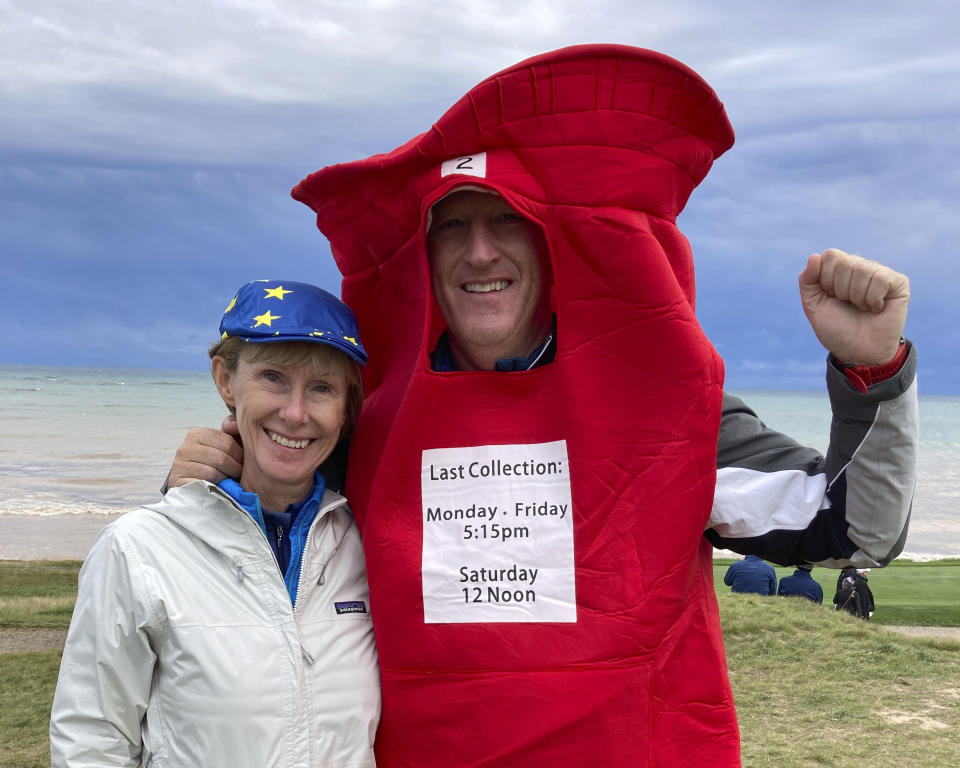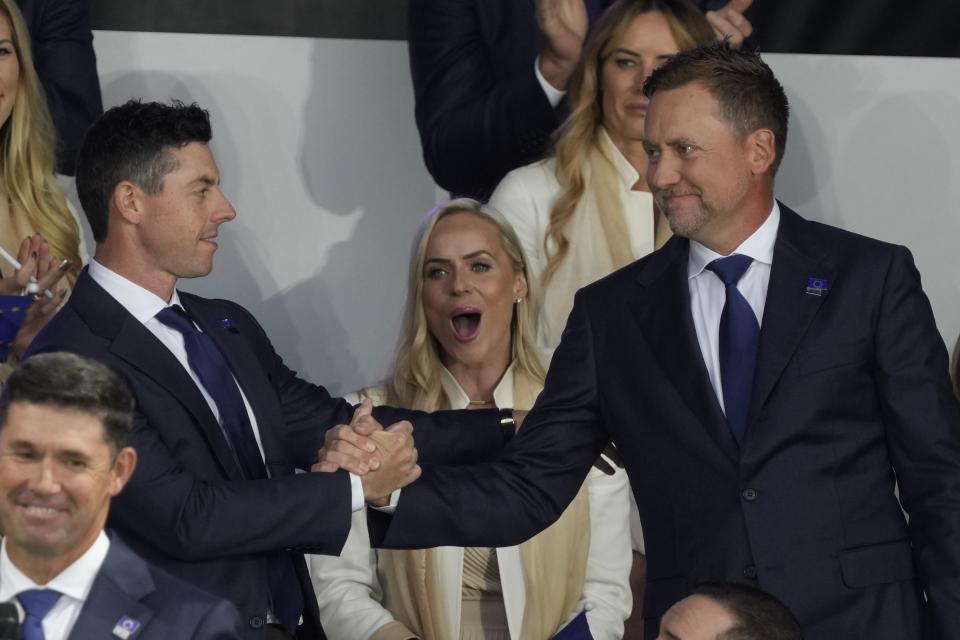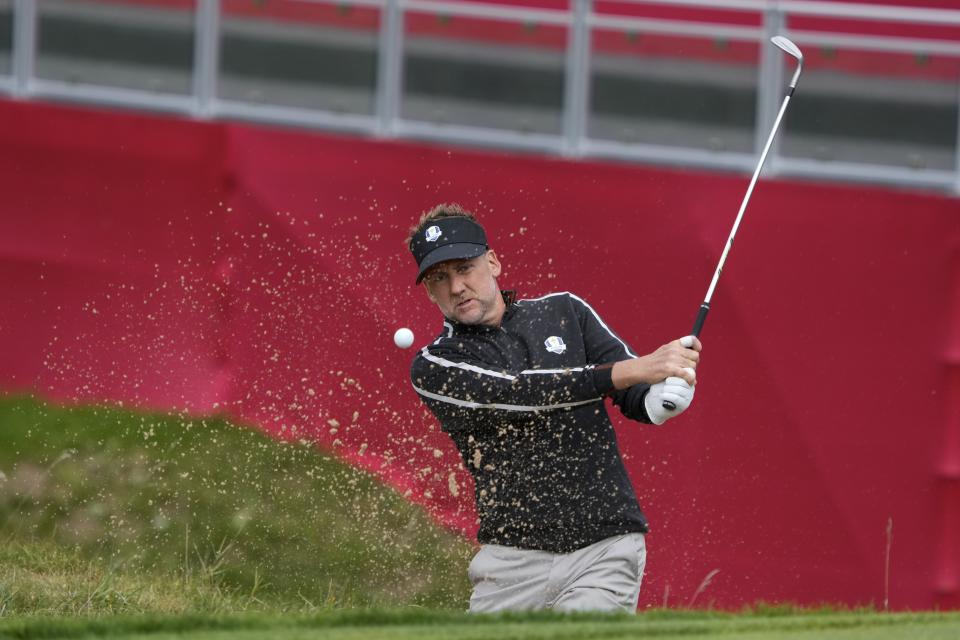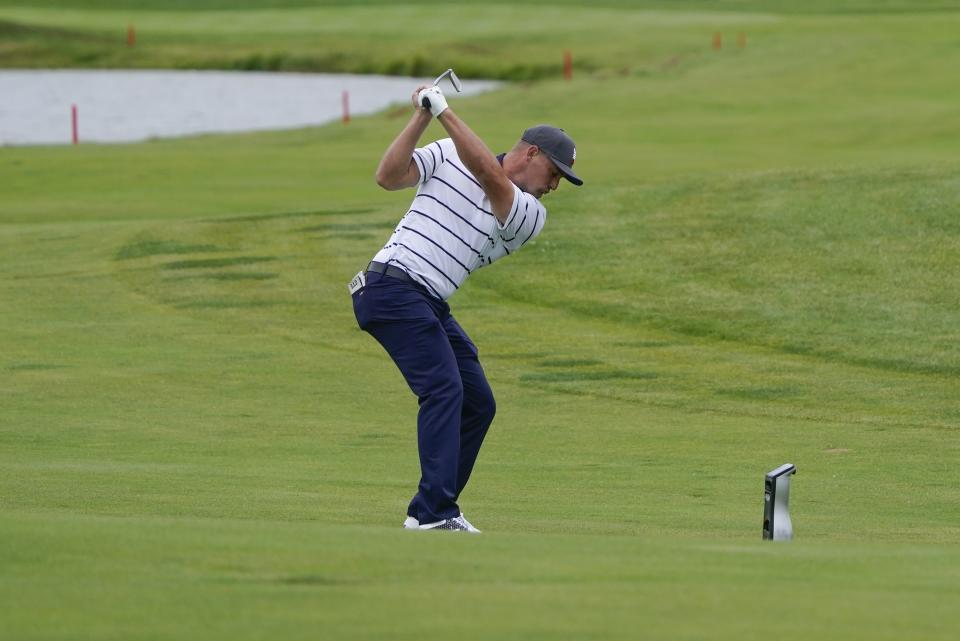Europe: Team without a country but many wins at Ryder Cup
SHEBOYGAN, Wis. (AP) — A few things have changed since the last time Europe and the United States gathered for the Ryder Cup.
For one, Europe.
In the post-Brexit world, seven of Europe’s 12 players aren’t technically from countries in the European Union anymore. But for decades now, this band of brothers has figured out how to set aside politics, paper over their differences, break down barriers and, more often than not, come together to win one for the home team.
Every two years — three in this case — natives of Britain and Spain and Ireland, sometimes France or Germany and, for the first time this year, Austria, leave their houses — often in Florida, sometimes in Arizona — pull their blue European-Union scarves out of their drawers and act like they’ve been best friends for years. In a lot of ways, they are. They’ve won the Ryder Cup four of the last five times.
Meanwhile, 12 U.S. golfers come together, put on the red, white and blue, rally around the stars and stripes, incite chants of “USA USA” and try to win one for America. It’s worked a grand total of three times since 1995.
It’s one of the great conundrums of the Ryder Cup, where Europe begins its title defense Friday at Whistling Straits. One team plays for its country and doesn't fare so well.
The other?
“We play for each other,” explained Rory McIlroy, a product of Northern Ireland and one of the seven players, the rest of them from England, who are no longer officially members of the EU. “I think that's the best thing you can do.”
That explains some of it.
Other reasons go deeper.
The Ryder Cup was a dying enterprise in the late-70s, no longer competitive between the best America had to offer against top golfers from Britain and Ireland, which had about one-fourth of the population from which to draw and nobody close to the caliber of Jack Nicklaus, Tom Watson, Hale Irwin or Raymond Floyd.
Several people, including Nicklaus, floated the idea of expanding the opposition to include all of Europe. Seve Ballesteros of Spain latched on and never let go. That started in 1979. And so, a new team was born out of the old continent.
“Pretty straightforward. Seve,” European captain Padraig Harrington said when asked who, or what, the Europeans actually have rallied around for all these years. “He pushed for this to become continental, and it was a way for Seve to legitimize the European Tour."
The European Tour certainly had, and still has, an underdog feel to it, and Ballesteros was on the front lines of a charge to prove that the Euros could stand toe to toe with Americans, whose tour had more money, more exposure and more talent.
Point made. Since the change in 1979, Europe has brought the cup back to the continent 12 of 20 times.
But in a sign of how things have changed over the decades, the top two places on today's European Tour points list are held by Collin Morikawa (who is at Whistling Straits this week) and Billy Horschel (who is not). They are a pair of Americans whose finishes in majors, World Golf Championships and, in Horschel's case, a side trip to the European Tour itself, have vaulted them above the regulars in the standings.
Meanwhile, all but one of the 12 players on Europe's Ryder Cup roster (Brand Wiesberger), are regulars or semi-regulars on the PGA Tour in the U.S.
And yet, they come to the Ryder Cup every other year, grasp firmly onto the underdog role that Ballesteros cultivated so well, produce a few cheeky social-media videos and act as though they've been playing together for years.
Only two short months ago, five of these same players, including McIlroy and Tommy Fleetwood, were competing for Olympic gold medals in Tokyo and wearing their own countries' colors.
This week, they'll wear brown and white, or maybe green and gold — they donned the colors of the Green Bay Packers to try to gin up some love from the American fans one day in practice — and come together as one.
“I honestly have no idea,” Ireland's Shane Lowry said when asked why the bond between all these players from different countries remains so strong. “But when you enter that team room, there’s almost like — something just hits you.”
One of Harrington's themes this week was expressed in a video he put out, emphasizing that only 164 players have had the honor of competing for the European side in the Ryder Cup. More people have climbed Mount Everest and gone into space, the video pointed out.
Another video played at the opening ceremony featured 2018 European captain Thomas Bjorn of Denmark stating the obvious.
“We have different cultures and background and we believe in different things,” he said.
And yet, continued Germany's Bernhard Langer, when they come together, magic happens.
Soon after, the announcer in the stadium asked everyone to rise for a rarely used tribute — the playing of the anthem of Europe.
What's that, you ask?
Beethoven's “Ode to Joy.”
___
For more AP golf coverage: https://apnews.com/apf-Golf and https://twitter.com/AP_Sports














